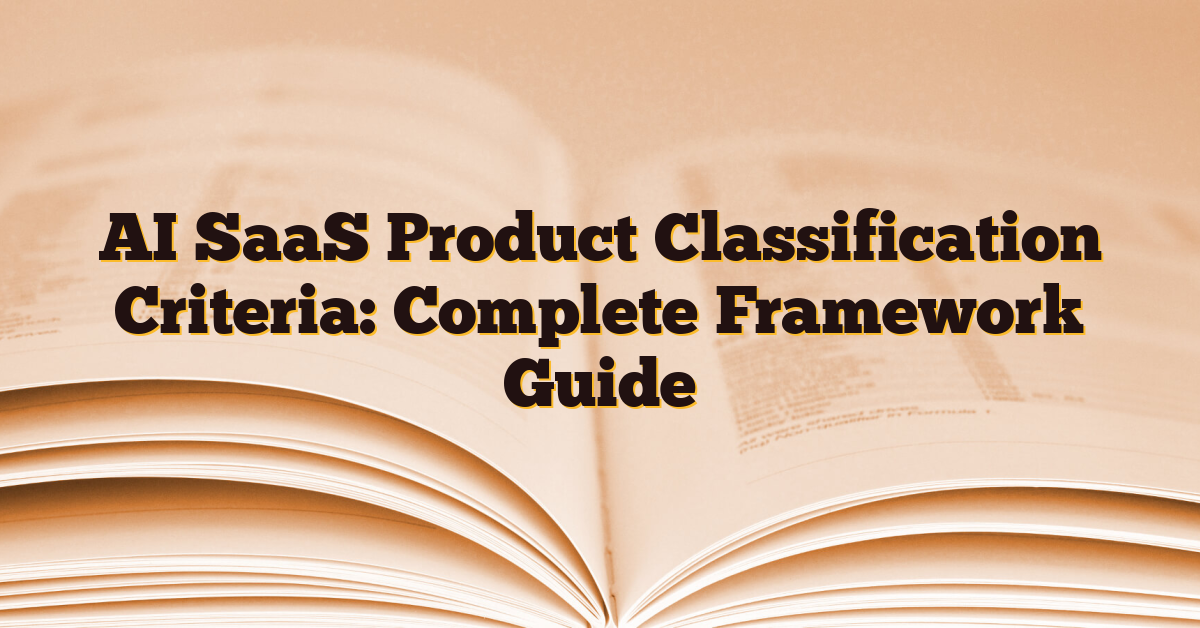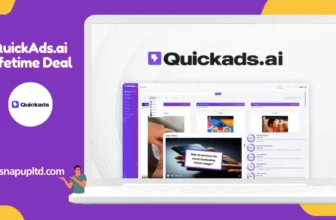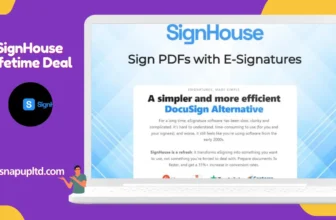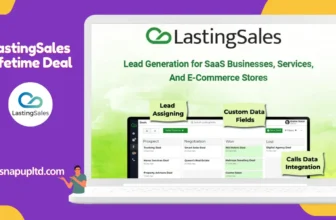Introduction
With hundreds of AI-powered tools popping up every quarter, the SaaS landscape is getting noisy (to say the least). Whether you’re launching a new product, analyzing competitors, or trying to explain what your startup actually does to an investor — having a clear way to classify AI SaaS products is becoming essential.
That’s where a solid understanding of AI SaaS product classification criteria steps in. Instead of relying on vague buzzwords like “next-gen” or “smart,” we can break products down logically — by function, technology depth, delivery model, and more — so buyers, builders, and backers all speak the same language.
Why Classification Matters in the AI SaaS Industry
Driving Clarity in a Crowded Market
Not all AI SaaS tools are built equal — but to outsiders, many look and sound suspiciously similar. Clear classification helps cut through the noise by grouping products based on what they really are, not just how they market themselves. When you start labeling tools by functionality, intelligence type, or data dependency, it becomes much easier to compare apples to apples (instead of apples to AI-powered oranges).
Supporting Positioning, Pricing & Scalability
Smart classification isn’t just for industry analysts — it’s a strategic weapon for SaaS founders. Understanding where your product sits helps you position it correctly, price it competitively, and plan for future expansions. For example, a narrowly classified point-solution SaaS might start at a lower price tier, while a broader platform-level product can command premium ARR from day one.
Enhancing Buyer & Investor Understanding
Buyers want to know what a tool does, how intelligent it actually is, and whether it fits into their tech stack. Investors want to know where it sits in the market, which category it belongs to, and how scalable it could be. Solid AI SaaS product classification criteria make it easier for both groups to quickly figure out if your product’s a fit — without needing a 45-slide pitch deck to decode it.
Core Criteria for Classifying AI SaaS Products
Functionality & Primary Use-Case
Start by asking the simplest question: What task does this product actually help the user accomplish?
Is it handling marketing, customer support, finance, operations, analytics, or something else entirely? Classifying based on use-case instantly gives context — for example: “AI-powered CRM vs AI-driven expense management platform.” It’s the most intuitive way to help someone understand what your product does at a glance.
Type of Artificial Intelligence Applied
Not all AI is created equal. Some products are powered by machine learning models, others by natural language processing (NLP), and some use a combination of rules-based automation + predictive AI. This is a powerful classification criterion because it speaks to the “depth of intelligence.”
-
NLP tools → text generation, chat, summarization
-
Computer-vision tools → image, video, visual workflows
-
Predictive ML tools → forecasting, recommendations
-
Generative AI tools → creation of new content/data
Knowing the tech behind the product frames expectations clearly.
Data Dependency & Data Flow Patterns
Another smart way to classify AI SaaS products is by how they use data. Some tools are data-hungry (requiring constant user-specific inputs), while others rely on pre-trained models. Some learn continuously from live data streams; others use fixed datasets. Classifying based on data dependency helps buyers understand integration effort, privacy concerns, and technical complexity.
Delivery Model & Infrastructure
Is the product delivered fully cloud-based? Does it involve an on-premise deployment? Is there an API-first architecture or only a plug-and-play web app? Delivery model affects scalability, pricing, and even which customers you can realistically serve. Classifying AI SaaS tools as API-first, platform-as-a-service (PaaS), or end-user application sets expectations around usage and integration.
Target Customer Segment (B2B, B2C, Enterprise)
Lastly, determine who the tool is built for. A consumer-facing AI writing app obeys very different product logic than an enterprise-grade forecasting engine. Segmenting by audience — SMBs, mid-market teams, large-scale enterprises, or individual end-users — ensures your classification accurately reflects business model, pricing structure, sales cycles, and real-world applicability.
Additional Classification Factors to Consider
Pricing Model & Revenue Mechanics
Beyond core features, classification can extend into how a product monetizes. Does it follow a classic subscription-based SaaS model, usage-based pricing, freemium tiers, or custom enterprise licensing? Products with high consumption variability (like API-based AI tools) often fall into usage-based buckets, whereas plug-and-play apps lean toward subscription SaaS. This criterion signals the product’s business maturity and revenue predictability.
Integration Complexity & Ecosystem Role
Some AI SaaS tools operate as self-contained “single player” apps, while others are designed as connective tissue inside a broader tech ecosystem. Classifying by integration depth tells users whether a product is a standalone point solution, a workflow enhancer (integrates with 3rd party apps), or a platform that others can build on. Ecosystem role becomes especially important as user stacks get more complex.
Level of Automation vs Augmentation
AI SaaS products typically fall somewhere on a spectrum between automation (AI replaces human effort) and augmentation (AI assists human decisions). For instance, bookkeeping tools like Pilot aim for full automation, while tools like Gong augment sales reps with conversation intelligence. Classification here matters because it shapes user expectations and adoption mindset.
Regulatory, Ethical & Compliance Dimensions
As AI use spreads into sensitive domains (healthcare, finance, legal, HR), regulatory obligations kick in. Products that handle personal, confidential, or regulated data are classed differently — often mapped against frameworks such as GDPR, HIPAA, SOC2, etc. This classification criterion may not be visible at first glance, but it’s critical for enterprise sales and investor due diligence.
Example: Building a Classification Matrix for AI SaaS Products
Step-by-Step Creation of a Criteria Matrix
To bring all of these criteria together in a practical way, many SaaS operators use a classification matrix. Think of it as a table where each row is a product and each column represents one criterion (e.g., Use-case, AI-type, Pricing model, Integration depth, Target user, etc.). Filling this out helps you visually assess similarities and differences across tools — instead of relying on gut feel.
Sample Filled Matrix Using Real-World Tools
| Product | Use-Case | AI Type | Pricing Model | Delivery Style | Target User | Notes |
|---|---|---|---|---|---|---|
| Jasper | Content writing | NLP/Gen-AI | Subscription | Web App | SMB / Marketers | High Augmentation |
| Gong | Sales insights | ML + NLP | Seat-based | Platform | Enterprise | Augmentation Platform |
| Inferex | ML Ops | ML Infrastructure | Usage-based | API/PaaS | Developers | Full Automation/Backend |
How Founders & Teams Can Use This Framework Strategically
Informing Product Development & GTM Decisions
Understanding where your AI SaaS product sits in the classification matrix helps guide smarter decision-making. For example, if your tool is labeled a “point solution” for SMBs, but your roadmap is heading toward platform expansion, you’ll need to architect both your product and your go-to-market strategy differently. Classification criteria provide signposts that help teams prioritize features, pricing, integrations, and messaging based on where they aim to move over time.
Aligning With Investor Expectations
Investors — especially those in the SaaS and AI space — mentally categorize products within seconds. If your startup’s positioning isn’t aligned with where VCs think the opportunity lies, it creates unnecessary friction. Using a classification framework ensures your story fits an existing mental model (or deliberately breaks it when you want to be seen as a category-creator). It also pre-empts due-diligence questions about scalability, compliance, and monetization.
Staying Flexible as the AI SaaS Category Evolves
Perhaps most importantly, classification shouldn’t lock you into a box forever. Instead, it should give you a baseline from which to evolve. As the AI SaaS market continues to shift rapidly — with new models, regulations, and use-cases emerging constantly — regularly updating where your product sits on the classification spectrum helps you stay adaptable and competitive.
Conclusion: Towards Smarter Categorization in the AI SaaS Era
In a world where AI is transforming nearly every corner of the SaaS industry, clear classification is no longer just academic — it’s strategic. By using structured AI SaaS product classification criteria, founders and operators can better understand where they stand, where they’re headed, and how to communicate that journey to buyers, team members, and investors.
Instead of relying on hype or guesswork, thoughtful categorization brings clarity to chaos. It helps you spot opportunities, avoid crowded lanes, and position your product with intention. As the AI SaaS landscape continues to evolve at lightning speed, companies that embrace smart classification will have a powerful advantage: the ability to navigate complexity with confidence — and turn product identity into a competitive edge.





